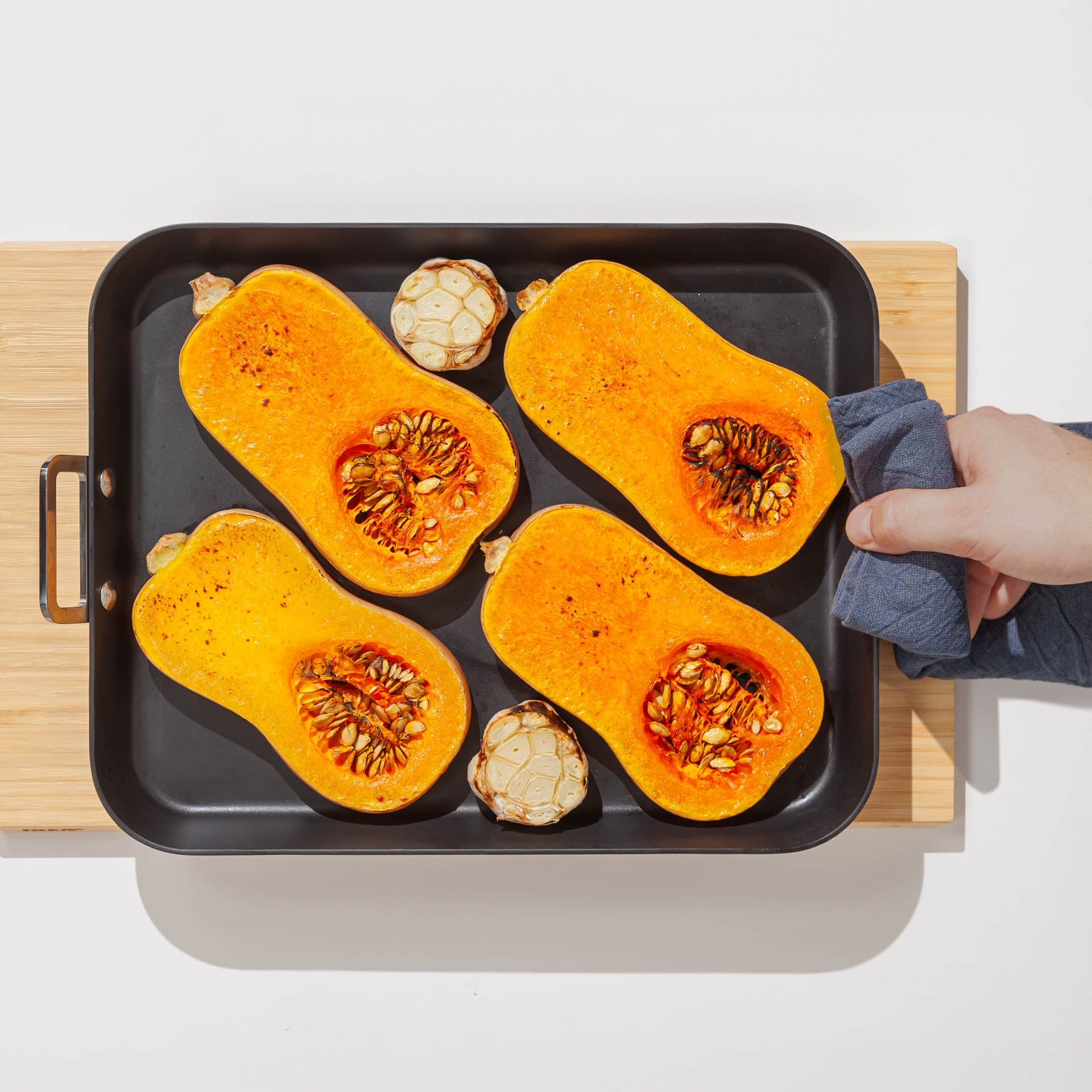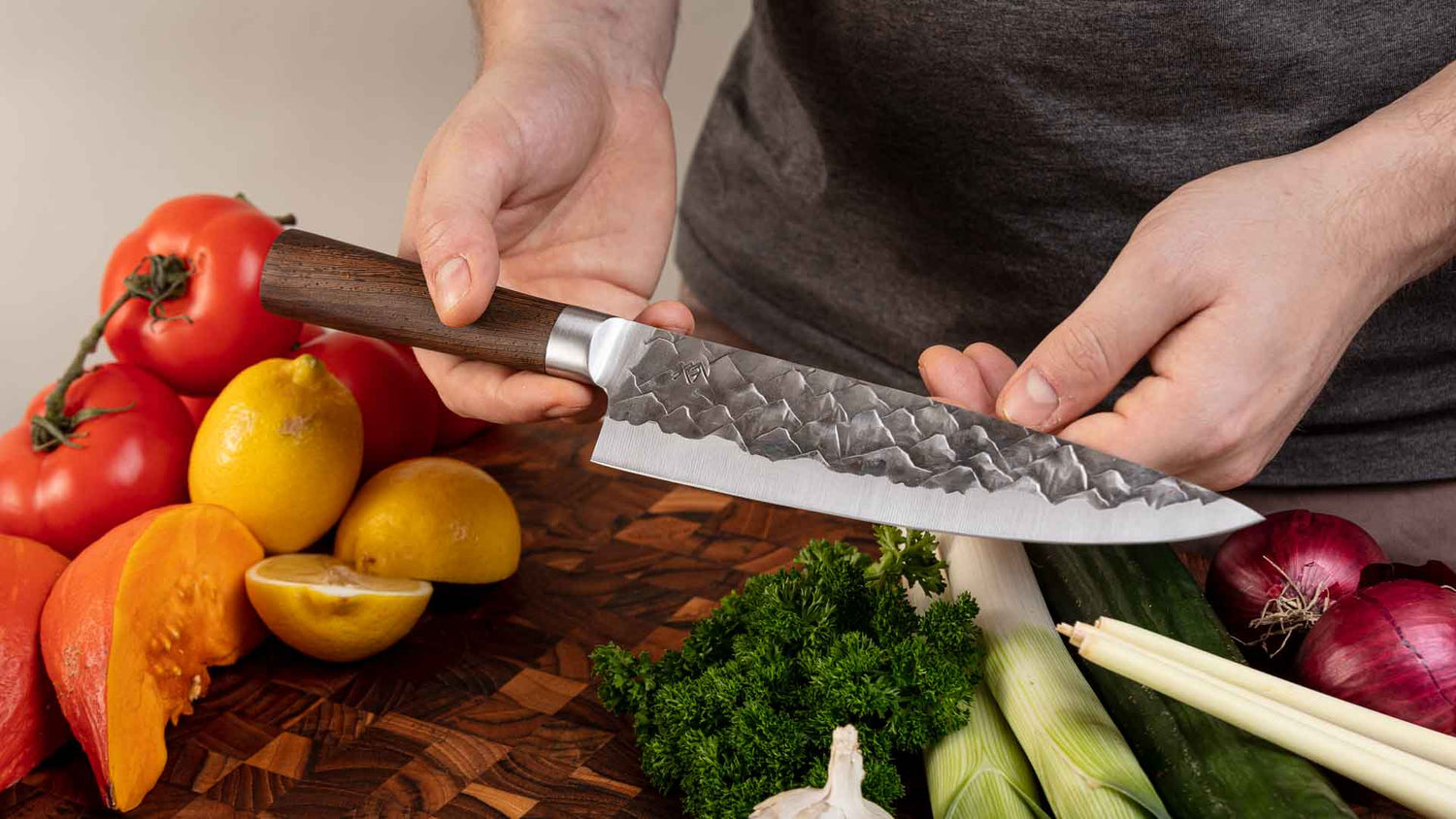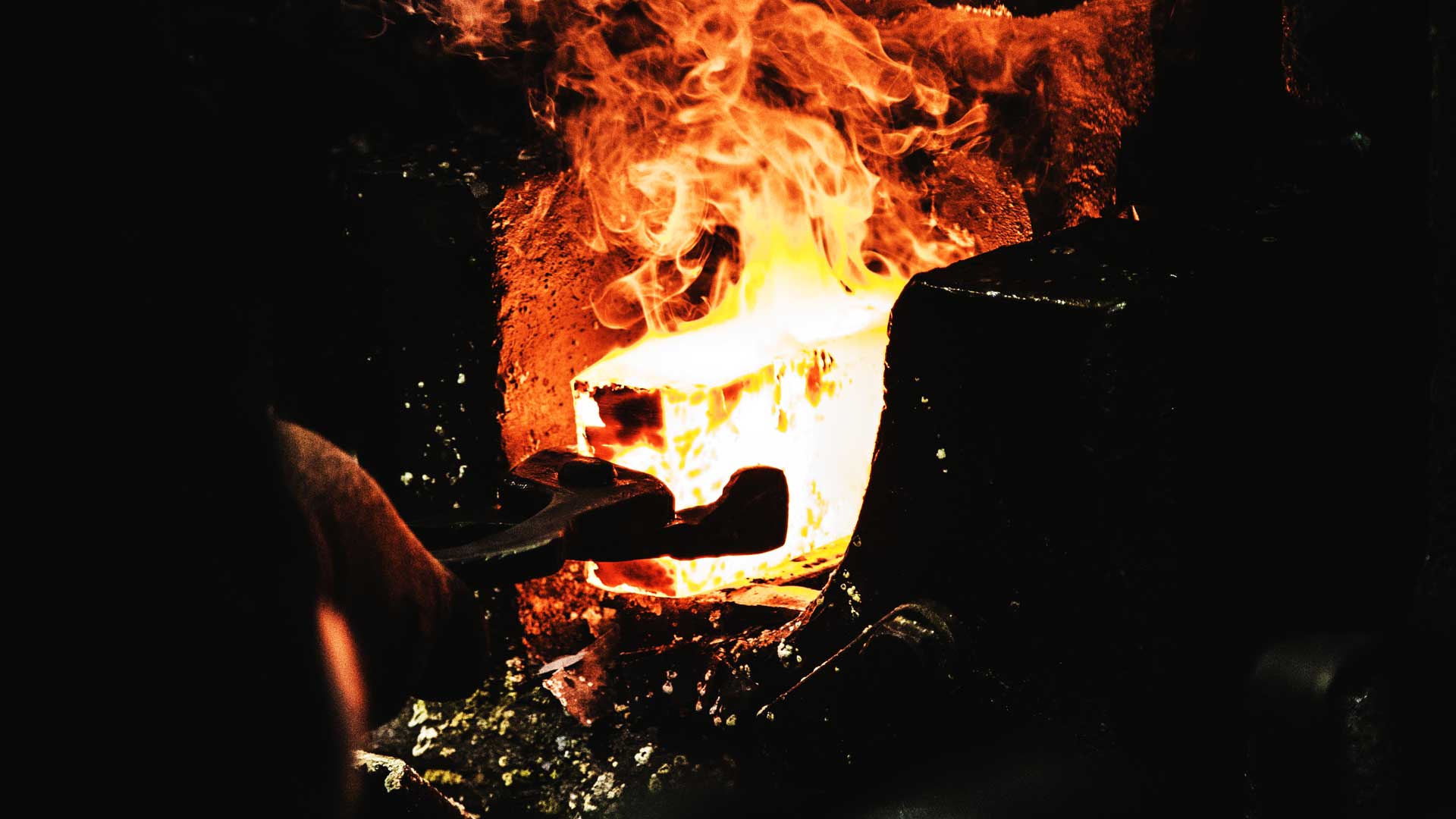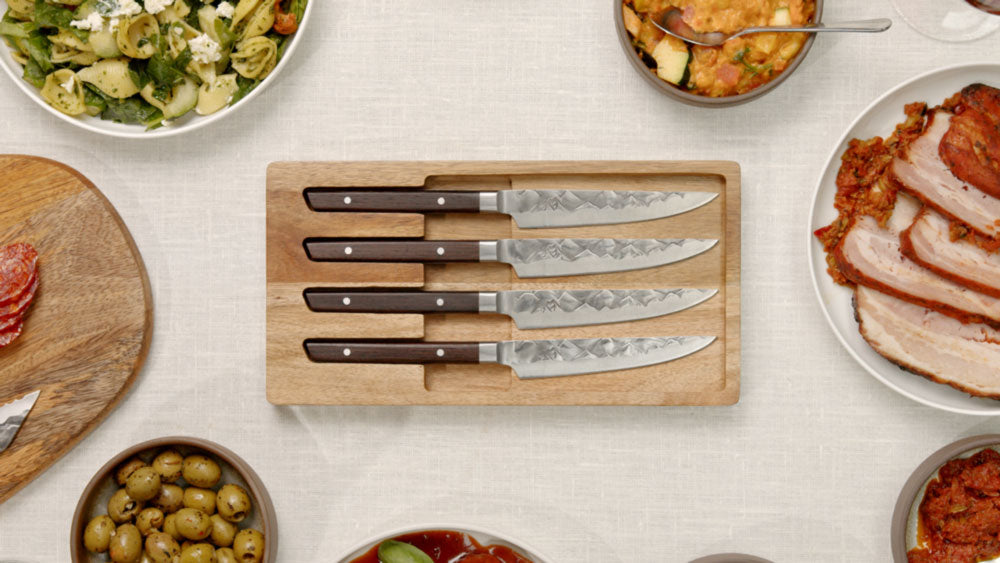Allright, if you have never used a chef's knife before, the task might seem daunting. Chef's knives are a lot larger and sharper then your average potato peeler. But not to worry, using a chef's knife is quite simple. So lets just jump in.
HOW DO YOU HOLD A CHEF'S KNIFE?
While just holding the handle might seem the most logical way to hold a knife, but this doesn't give you nearly enough control. The correct way to hold a chef's knife is the 'pinch grip'. Place your index finger against one side of the blade, just ahead of the bolster and your thumb on the opposite side of the blade. Now curl the rest of your fingers around the handle. Tada! the pinch grip.

Now thats you cutting hand taken care of. One hand left to go.
THE CLAW
To make sure you only chop the food on your cutting board, it is imperative that you use the claw grip. Make a claw with your hand and rest the blade against the middle part of your fingers. With the tips of your fingers you can hold the food you are cutting. Using this grip you ensure the safety of your finger tips.

CHOPPING TECHNIQUE
Now you have perfected your knife holding technique, it's time to actually cut something. The chef's cut, most importantly, take it slow. Get the basic motion down before attempting to speed through a pile of vegetables.
The basic motion is simple. While resting the blade against the middle part of your finger, and resting the tip of the blade on your cutting board move the blade back and forward while simultaneously moving is up and down. Essentially, your hand will describe a circle. While making this motion move your knife along the piece of food you are cutting.
Another good technique to know is the chop. Hold the knife against you fingers as discussed before, and simply move your knife up and down. This is a great technique to chop herbs or small vegetables into very fine pieces.
If you're interested in more things you can do with your chef's knife, we have listed 11 of them here.
CLEANING UP
Allright, everything in your fridge has now been reduced to perfect cubes. it's time for the cleanup. Hold your knife under a running tap for a few seconds and if necessary, wipe it of with a non-abrasive sponge or cloth. Then dry it of. Store the knife spine down in a knife block or on a magnet strip.
A couple of quick tips for you to get the most out of your knife.
- Make sure you never put a high quality chef's knife in the dishwasher. The dishwasher is a sure way to encite rust and dull your knife. If your knife does rusts a bit don't be worried, this is normal and be easily be taken care of. Here is how.
- Don't store a knife in a manner it can come in contact with other metal objects, such as a cutlery drawer. This can scratch and dull your knife.
- Don't use a cutting board that is made of very hard materials. Glass or metal cutting boards might seem like a good idea, but the will dull your knife much faster then a wood or plastic cutting board. Secondly, on a hard cutting board your knife is more likely to slip.
- Let the knife do the work. If you find yourself applying excessive force to cut through something, your knife needs to be sharpened. Excessive force leads to knives slipping of cutting boards and hurting you. This is why we say; a sharp knife is a safe knife.
- Don't use the knife's edge to scrape food of a cutting board. This will dull the edge. Instead turn the knife 180° and use the spine of the blade.

The most important thing of all is to make sure you are safe. Using a good chef's knife makes cooking a lot more fun. Make sure it stays fun by being careful with your knife.







Leave a comment
All comments are moderated before being published.
This site is protected by hCaptcha and the hCaptcha Privacy Policy and Terms of Service apply.